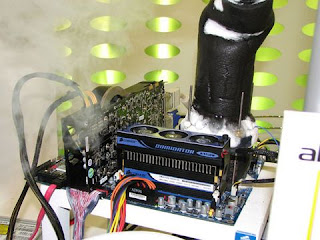
Overclocking a processor means enabling it to operate above the manufacturer's specified frequency. Many Internet sites provide instructions for overclocking. Processor manufacturers and many computer experts believe the slight gain in performance (only perceivable on CPU-intensive software) isn't worth the expense or considerable risk.
Instructions / Steps
1.Get whatever tools you need: screwdriver, needle-nose pliers, motherboard manual, cooling hardware, etc.
2.Find out whether your motherboard can be adjusted in the BIOS setup, with jumpers or not at all.
3.Find out clock-speed limitations of the motherboard.
4.Run all Windows and any third-party diagnostic applications you have. Fix all system problems.
5.Make a complete backup of your system, documents and applications you don't have on CD-ROM. Do not overwrite these copies.
6.If you have a BIOS-adjustable motherboard, make changes according to your motherboard manual, and skip to Step 15.
7.Shut down computer.
8.Leave computer plugged in to surge suppressor.
9.Disconnect all peripherals from computer.
10.Remove cover of chassis.
11.Ground yourself to computer with any professional grounding equipment you have. Otherwise, ground yourself by touching a metal part of the chassis.
12.If your motherboard has adjustable jumpers, locate the jumpers that control the CPU speed.
13.Use needle-nose pliers to change jumper settings. Move jumpers to positions indicated in your motherboard manual for the clock speed you want. Check the Internet for recommendations.
14.Install a CPU heat sink, heat-sink compound, and a specialty cooling fan, if appropriate and possible.
15.Put system back together, and reboot.
16.If computer does not boot, and CPU still works, try lowering the clock speed. If that doesn't work, restore the original configuration.
17.Check all functions, and run a CPU-intensive program.
No comments:
Post a Comment